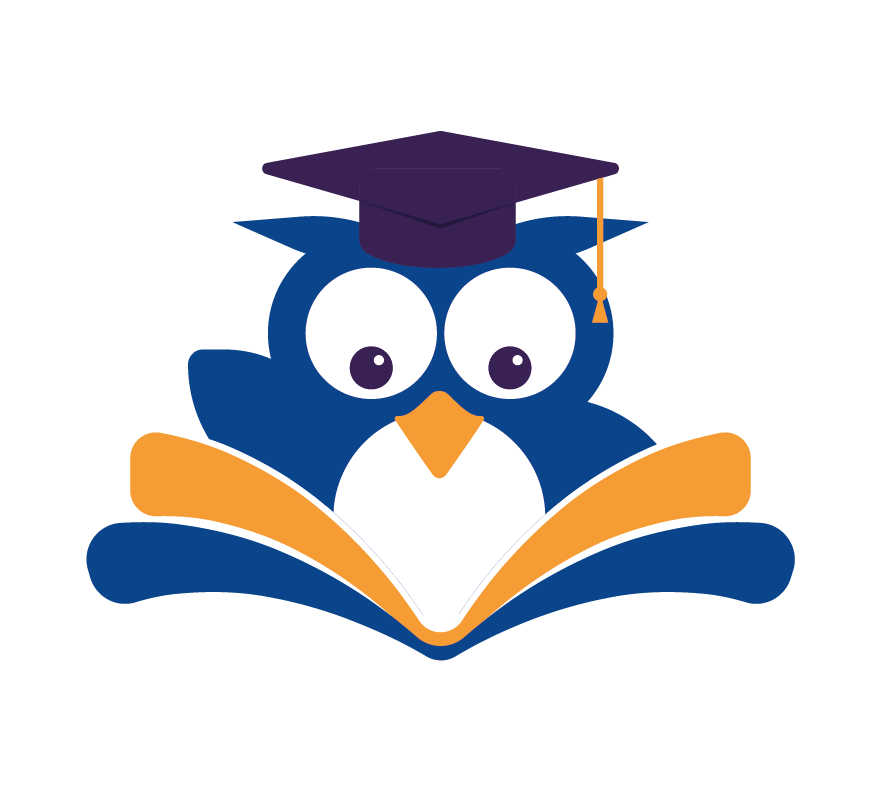Imagine learning anything you want, at your own pace, and with great results. Self-taught geniuses like Tesla, Einstein, and Da Vinci have mastered this skill. We’re here to show you how to do it too.
Anthony Metivier says these geniuses have a common habit of actively engaging with learning material. They use techniques like the Feynman technique and talk to real people. This helps them understand and be creative. We can use these self-learning techniques to make learning fun and effective.
By learning from these historical figures, you can unlock your own potential. You can become a more efficient learner. Let’s see how you can adopt these habits to change your learning experience.
Key Takeaways
- Self-taught geniuses use active learning techniques to achieve deeper understanding.
- The Feynman technique is a powerful tool for effective learning.
- Interacting with real people can boost creativity and learning.
- Adopting the right self-learning techniques can make learning more enjoyable.
- You can unlock your potential by applying the habits of self-taught geniuses.
The Mind of a Self-Taught Genius
What makes a self-taught genius tick? Let’s explore the traits that define them. These geniuses achieve greatness without formal education.
What Defines a Self-Taught Genius
Self-taught geniuses are driven by curiosity and pattern recognition. They love to learn and explore new subjects. They see connections where others don’t, a key trait of successful autodidacts.
Famous Examples: From Leonardo da Vinci to Modern Autodidacts
History is full of self-taught geniuses. Leonardo da Vinci, for example, was a master in many fields through self-learning. Today, entrepreneurs like Steve Jobs and Richard Branson also credit their success to self-directed learning.
The Neurological Advantages of Self-Directed Learning
Studies show self-directed learning boosts the brain. It improves pattern recognition and curiosity. This way, individuals can grow their brain’s connections, leading to innovation and adaptability.
| Trait | Description | Benefit |
|---|---|---|
| Curiosity | Driven to learn and explore new subjects | Fosters innovation and adaptability |
| Pattern Recognition | Ability to connect seemingly unrelated concepts | Enhances problem-solving skills |
| Self-Directed Learning | Taking control of one’s learning process | Stimulates neurological adaptability |
By understanding these traits, we can unlock our potential. The characteristics of self-taught prodigies are within reach. Embracing them can lead to greatness in our fields.
The Power of Curiosity-Driven Learning
Curiosity sparks the flame of learning in self-taught geniuses. It opens us to new possibilities and discoveries. Highly intelligent self-learners often share a love for curiosity-driven learning.
Cultivating Insatiable Curiosity
To become a self-taught genius, you need insatiable curiosity. This means being open to new experiences and asking questions. Techniques like the 5-Why Technique and Curiosity Journaling can help.
The 5-Why Technique
The 5-Why Technique asks “why” five times to find the root of a problem. It deepens understanding and boosts critical thinking.
Curiosity Journaling
Curiosity Journaling records your questions and observations. It helps track your thought process and reflect on your learning journey.
Transforming Passive Interest into Active Investigation
Curiosity alone isn’t enough. You must turn passive interest into active investigation. This means taking steps to explore topics that interest you.
| Strategy | Description | Benefit |
|---|---|---|
| 5-Why Technique | Ask “why” five times to understand the root of a concept | Deeper understanding and critical thinking |
| Curiosity Journaling | Record questions and observations | Track thought process and reflect on learning |
| Active Investigation | Take deliberate actions to explore topics of interest | Transforms passive interest into active learning |
By using these strategies daily, you can tap into curiosity-driven learning. This makes you a more effective self-learner.
Habits of Self-Taught Geniuses You Can Adopt Today
Learning from self-taught geniuses is easy. Just add a few habits to your daily life. These habits can boost your learning and help you reach your goals.
Morning Routines for Optimal Learning
Begin your day with a routine for better learning. Many geniuses wake up early. They start with meditation, journaling, or reading.
Benjamin Franklin woke up early. He spent time thinking and asking himself questions to plan his day.
- Wake up early to enjoy quiet morning hours
- Engage in activities that stimulate your mind, such as reading or puzzles
- Plan your day to maximize productivity
Strategic Time Blocking for Deep Work
Geniuses block time for deep work. They schedule big chunks of time for complex tasks. This helps them focus without distractions.
The 20-Hour Rule for New Skills
The 20-hour rule says 20 hours of practice can improve a new skill. It’s not about being an expert. It’s about getting good enough to build on.
Breaking Down the Learning Process
To use the 20-hour rule, break learning into parts. Find the main parts of the skill. Focus on one part at a time.
Measuring Progress Effectively
Tracking your progress keeps you motivated. Use specific metrics or goals to see how far you’ve come.
By following these habits, you can improve your learning. Remember, keep it up and stay consistent.
Deliberate Practice: The Genius Approach
To reach your full potential, you must adopt a special practice method called ‘deliberate practice’. It’s not just about spending a lot of time practicing. It’s about doing it with a purpose, focusing on your weaknesses, and stepping out of your comfort zone.
Designing Your Practice Sessions
Good practice sessions have a clear goal. You should know exactly what skills or areas you want to get better at.
Setting Micro-Challenges
Divide big goals into smaller, easier challenges. This makes the task less scary and lets you work on specific skills.
Creating Feedback Mechanisms
Getting feedback is key in deliberate practice. You need to know how you’re doing and where you can improve. This could be through self-checks, a mentor, or technology to track your progress.
| Practice Element | Description | Example |
|---|---|---|
| Micro-Challenges | Breaking down skills into smaller tasks | For a musician, this could mean practicing a difficult passage repeatedly. |
| Feedback Mechanisms | Methods for assessing performance | Recording yourself and listening back to identify areas for improvement. |
Spaced Repetition and Retrieval Practice
Spaced repetition means reviewing material at longer intervals to help it stick in your memory. Retrieval practice is about actively recalling information from memory, not just re-reading it.
Using both of these methods can really boost your learning and memory.
The Role of Discomfort in Skill Development
Deliberate practice isn’t easy. It means pushing yourself beyond what you can do now, which can be tough and sometimes frustrating.
But, it’s this discomfort that helps you grow. By facing the challenge, you can improve faster.

Cross-Disciplinary Thinking: Connecting Knowledge Dots
The brightest minds often share a common trait: they can connect knowledge from different fields. This skill lets them spot patterns and connections others might miss. It leads to new ideas and solutions.
Mental Models from Different Fields
One key benefit of cross-disciplinary thinking is using mental models from various fields. For example, biology’s natural selection can help understand economics’ competitive markets. By using mental models from different disciplines, you get a deeper understanding of complex issues.
Creating Your Personal Knowledge Web
To connect knowledge dots, you need a personal knowledge web. This means organizing and linking new info to what you already know. Mind mapping and concept connection exercises are great for this.
Mind Mapping Techniques
Mind mapping is a visual way to organize information. Start with a central idea and add related concepts. Use colors, symbols, and images to make connections clear. It helps structure your thoughts and show relationships between info.
Concept Connection Exercises
Concept connection exercises involve finding links between unrelated ideas. For example, relate a physics concept to a social dynamics problem. This practice improves your ability to think across disciplines and can lead to new insights.
Finding Inspiration in Unexpected Places
Successful autodidacts often find inspiration in unexpected places. By exploring different subjects and cultures, you can discover new ideas. This approach broadens your knowledge, boosts creativity, and fosters innovation.
By embracing cross-disciplinary thinking and creating your personal knowledge web, you can unlock new levels of understanding. This will help you achieve greater success in your self-learning journey.
The Self-Taught Genius’s Information Diet
How we take in information greatly affects our learning and innovation. As self-taught geniuses, we must choose carefully what we learn. It should be valuable, relevant, and match our goals.
Curating High-Quality Learning Resources
Finding the right learning materials is crucial. We need to know the difference between primary and secondary sources. Primary sources give us direct information. Secondary sources analyze or interpret primary sources.
Primary vs. Secondary Sources
It’s important to know the difference between primary and secondary sources. For example, a diary from history is a primary source. A history book that talks about that diary is a secondary source.
Digital Tools for Content Curation
Digital tools make curating content easier. Tools like Pocket or Feedly help organize what you read. Here’s a look at some popular tools:
| Tool | Functionality | User Interface |
|---|---|---|
| Save articles for later | Simple, intuitive | |
| Feedly | RSS feed reader | Customizable, user-friendly |
| Evernote | Note-taking, organization | Feature-rich, robust |
Balancing Depth and Breadth of Knowledge
It’s important to balance deep and wide knowledge. While diving deep into one subject is tempting, broad knowledge helps make new connections.

Information Consumption Schedules
Having a schedule for learning helps. Set times for reading, watching educational videos, or listening to podcasts. This keeps your learning on track.
By being smart about what we learn and using the right tools, we can improve our learning. This helps us reach our full potential as self-taught geniuses.
Overcoming Learning Plateaus and Obstacles
The path to mastery is rarely smooth, but with the right strategies, you can overcome any hurdle. As self-taught geniuses, we’ve learned to navigate through obstacles and stay on track.
Recognizing and Breaking Through Mental Blocks
Mental blocks can be daunting, but recognizing them is the first step to overcoming them. Take a break and revisit your work with fresh eyes, or try changing your environment to stimulate your mind. Sometimes, stepping away from a problem can help you approach it with a clearer perspective.
As the renowned physicist Richard Feynman once said,
“The first principle is that you must not fool yourself and you are the easiest person to fool.”
Being honest with yourself about your understanding and progress is crucial.
Strategies for Maintaining Motivation
Maintaining motivation is key to overcoming learning plateaus. Here are some strategies that work:
Progress Tracking Methods
- Keep a learning journal to track your progress
- Set achievable milestones and celebrate small wins
- Use apps or spreadsheets to monitor your study schedule
Reward Systems That Work
Implementing a reward system can be a great motivator. For instance, you could treat yourself to a favorite meal or activity after reaching a milestone.
| Milestone | Reward |
|---|---|
| Completing a challenging chapter | A favorite dessert |
| Finishing a project | A night out with friends |
Turning Failures into Stepping Stones
Failure is an inevitable part of the learning process. Instead of getting discouraged, view failures as opportunities to learn and grow. Analyze what went wrong and adjust your approach accordingly.
By adopting these strategies, you’ll be better equipped to overcome learning plateaus and continue making progress on your self-education journey.
Building Your Personal Learning System
Creating a personal learning system is key to unlocking our full potential. It helps us learn more efficiently and reach our goals faster.
Note-Taking Methods of Self-Taught Masters
Good note-taking is essential for learning. Self-taught masters use advanced methods to capture and organize knowledge.
The Zettelkasten Method
Niklas Luhmann’s Zettelkasten method is a powerful note-taking system. It breaks down complex ideas into a network of notes. This makes understanding and recalling information easier.
Digital vs. Analog Systems
Self-taught learners often choose between digital and analog note-taking. Digital tools are flexible and easy to access. But, some prefer the hands-on experience of analog methods. The best choice depends on your personal style and preferences.
| Method | Advantages | Disadvantages |
|---|---|---|
| Zettelkasten | Encourages interconnected thinking, enhances recall | Can be time-consuming to set up, requires discipline |
| Digital Note-taking | Accessible, searchable, and easily editable | May lead to distraction, requires device |
| Analog Note-taking | Tactile experience, no digital distraction | Limited accessibility, can be bulky |
Creating Your Knowledge Management Framework
A strong knowledge management framework is vital for organizing information. Combining good note-taking with a structured framework creates a powerful learning system. This supports our genius learning methods.
Teaching Others as a Learning Accelerator
Teaching others helps us understand better. The Feynman Technique, which simplifies complex ideas, is very effective. Sharing knowledge not only helps others but also strengthens our own understanding, revealing self-taught success secrets.
By using these strategies, we can create a learning system that meets our needs. This empowers us to reach our full potential as self-taught learners.
Conclusion: Your Journey to Self-Taught Excellence
Exploring the habits of self-taught geniuses shows us how to change our learning game. By using these self-learning techniques, anyone can reach their full potential. You can improve your learning by being curious, practicing on purpose, and choosing what you read and watch wisely.
Learning to be self-taught is a long-term effort, not a quick fix. By following the habits of geniuses, you’ll make progress towards your goals. You’ll become the best version of yourself.
So, what’s next? Pick an area you want to get better at and use the strategies from this article. As you keep learning, you’ll create a learning plan that fits you. This will keep you motivated and help you get past any challenges.
By adopting the habits of self-taught geniuses and using smart learning methods, you’ll open up new doors. Your journey to self-taught excellence starts now. Take that first step today!

